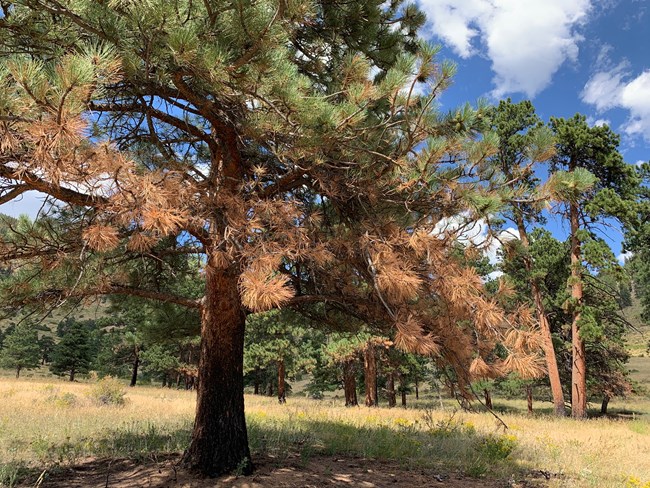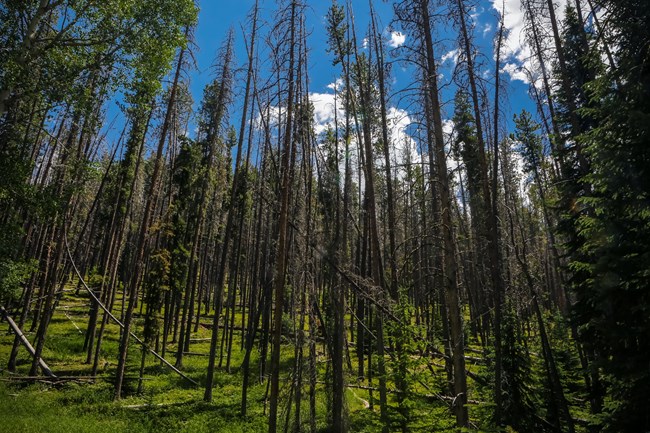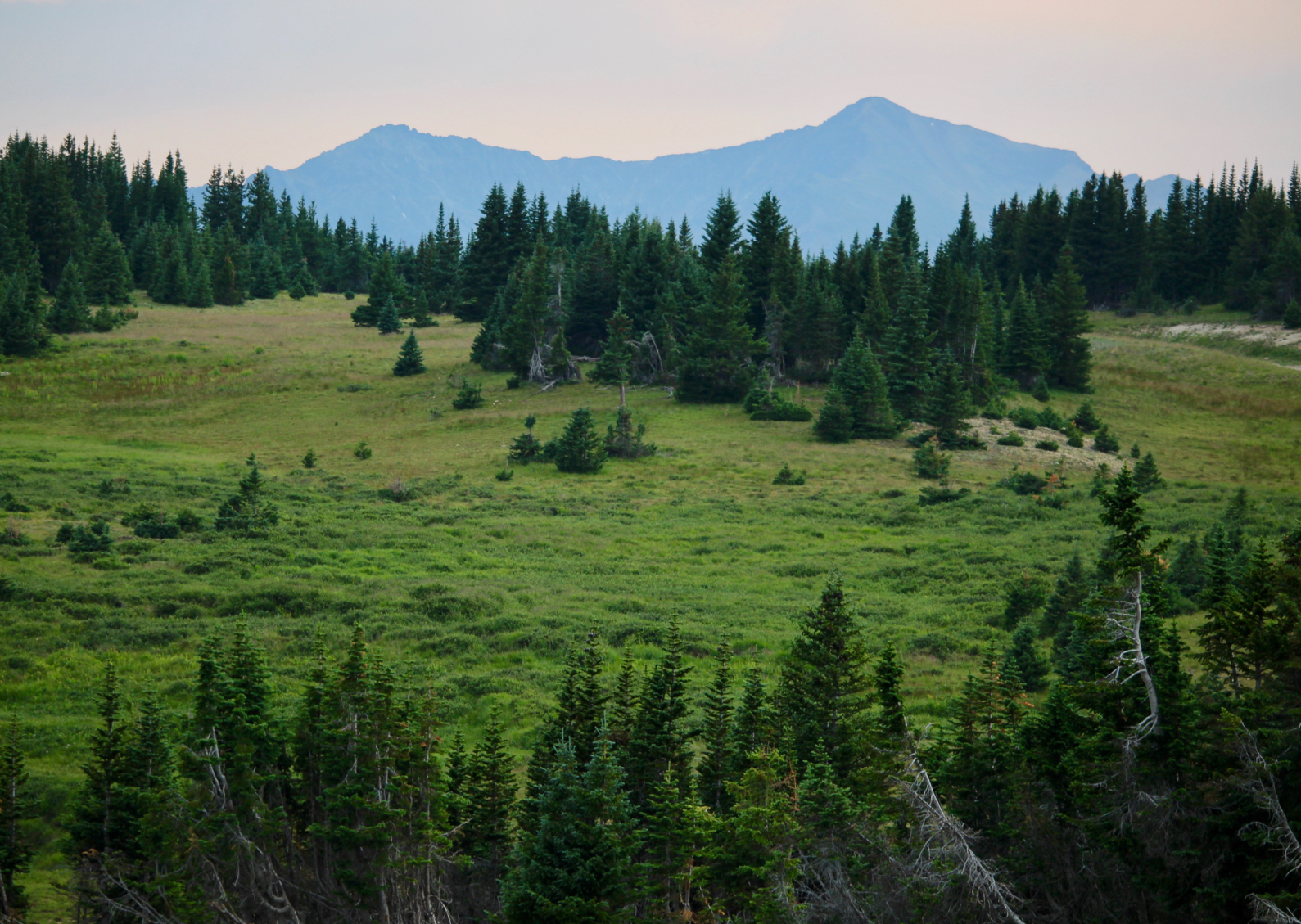Being Effected by the Fires So Once Again We Must Be Aware of
What is Fire Ecology?
Fire environmental is a co-operative of ecology that studies the origins of wildland burn down, its relationship to members of an ecosystem, and its function as an ecosystem process. To fully understand an ecosystem, we must understand not just its electric current state just also its by and potential future states.
Natural events such as floods, hurricanes, earthquakes, and fires promote change in ecosystems and have been occurring for thousands of years. In Rocky, many species rely on periodic fires to rejuvenate the mural, allowing for regeneration and growth.
To burn, fire needs only iii ingredients: fuel, oxygen, and heat. Fuel is any material that can burn. Vegetation such as grass, leaves, plants, shrubs, and trees are considered fuel. With oxygen in our air and plenty of fuel in our forests, Rocky is always merely 1 rut source away from wildfire.
With frequent afternoon thunderstorms during the summer months, lightning is a common natural heat source in the park. Withal, nearly 85 percent of wildland fires in the United states of america are caused past people. Unattended campfires, equipment apply and malfunctions, and improperly disposed cigarettes are just some of the ways humans tin can cause wildland fires. When spending time in the park, it is of import to know and follow the park'southward rules and regulations regarding fire.
Fire Ecology in Rocky
Forests do non live forever. One-time historic period, wind, disease, homo impacts, and insect infestations can all cause the death of copse. Burn is ane method nature uses to bring change and renewal to the landscape. The forests in Rocky take different adaptations which help them to endure periodic fires.
Ponderosa Pino
Ponderosa pines are oft found in the dry, south-facing slopes of the montane ecosystem (6,000 ft - 9,000 ft). They abound spread autonomously then their long, thick roots can absorb equally many nutrients every bit possible in these dry regions. Grasses, shrubs, and wildflowers grow betwixt the widely spaced trees.

NPS Photograph
The openness of these forests means that surface fires – fires which stay close to the ground – are common. While these fires kill young trees and other vegetation, they rarely kill the mature ponderosa pines because of their fire-resistant adaptations. These trees are self-pruning, pregnant their lower branches naturally autumn off. This reduces the likelihood of flames spreading to the treetops. Additionally, their thick bark acts as a shield, protecting the tree from the flames.
Although these trees are resilient against surface fires, crown fires – fires that move through the treetops – are also natural and common in ponderosa forests. Stand replacing crown fires can consume and kill the ponderosa woods, allowing for a new forest to grow in place of the onetime. Wildland fires move through ponderosa forests with a fire return interval of more than 40 years.

NPS Photo / Ann Schonlau
Lodgepole Pine
Lodgepole pines abound in multiple ecosystems but are typically seen between 8,500 ft and 10,000 ft. Different ponderosa pines, lodgepoles grow in dense forests. When a burn down burns a lodgepole forest, typically every 100 years, it burns equally a hot crown fire.
Lodgepole forests are fire-dependent and cannot regenerate without loftier heat. These fire-adjusted trees have serotinous cones that produce thousands of seeds. These cones are sealed tightly with resin, a sticky combustible substance. When a burn comes through the high temperatures melt the resin and open the cones, releasing the seeds. Without the alpine and dumbo tree stands, the new seeds have space and sunlight necessary to begin their growth.

NPS Photograph / Nicholas Scritchfield
Bandbox & Fir
Spruce and fir trees also abound in multiple ecosystems and tin can exist found equally high as eleven,400 ft. These cool, moist forests receive more snow and retain more than h2o in their soil than whatever other forest in the park. This moisture makes these forests fire-resistant. When wildland fires occur in spruce/fir forests every 300 years or so, it is normally driven by drought.
What is secondary succession?
When wildland fire moves through an ecosystem, whether it'due south been 30 years or 300 years since the concluding, the state is prepare for new life to emerge. The recolonization of species later on a disturbance – like a wildland fire – is called secondary succession.
The food-rich soil and open up infinite allow pioneer species, like aspen and fireweed, to announced apace. Grasses and other plants will also begin to grow back, followed past shrubs and trees. Somewhen, as copse grow taller, such every bit the lodgepole pines, the less shade-tolerant vegetation will die out and exist replaced past shade-tolerant species. Every bit fourth dimension goes on, the forest volition reach a state of maturity and, once again, be fix for wildland fire.

NPS Photo
shrefflerdozziess.blogspot.com
Source: https://www.nps.gov/romo/learn/fire-ecology.htm
Postar um comentário for "Being Effected by the Fires So Once Again We Must Be Aware of"